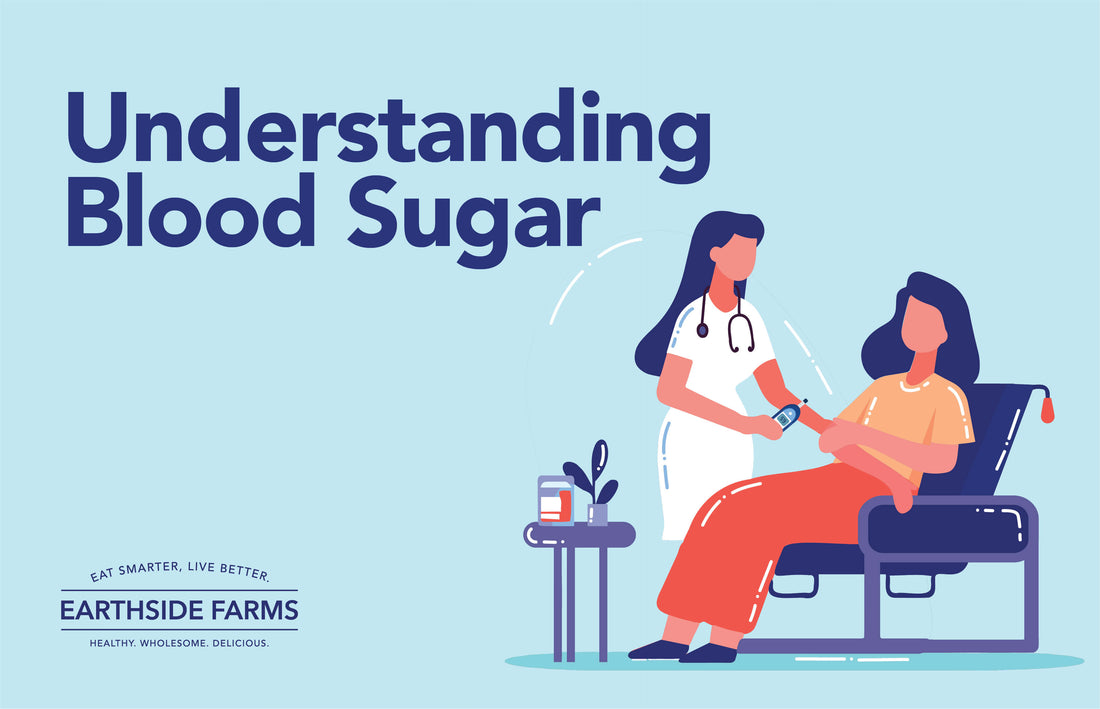What Is Blood Sugar?
Blood sugar (also called blood glucose) is the main type of sugar in your blood. It gives your body the energy it needs to work properly. You get blood sugar from the food you eat, especially foods with carbohydrates like bread, rice, fruits, and sweets.
After you eat, your body breaks the food down into sugar and sends it into your blood. That’s when a hormone called insulin helps move sugar from your blood into your cells, where it's used for energy.
How Your Body Uses Blood Sugar
Your pancreas makes insulin. If everything works as it should, insulin keeps your blood sugar at a healthy level. But if your body doesn’t make enough insulin or doesn’t use it properly, sugar stays in your blood instead of going into your cells. Over time, this can lead to diabetes and other health problems.
What Is a Normal Blood Sugar Level?
Blood sugar levels change throughout the day. Here’s what’s usually considered normal:
-
Before meals: 80 to 130 mg/dL
-
Two hours after eating: Less than 180 mg/dL
These numbers can be different for some people, depending on their age, health, and doctor’s advice. That’s why it’s important to know your own target range.

Symptoms of High and Low Blood Sugar
High Blood Sugar (Hyperglycemia):
When your blood sugar is too high, you may notice:
-
Feeling very thirsty
-
Feeling tired
-
Needing to pee often
-
Blurry vision
-
Headaches
Low Blood Sugar (Hypoglycemia):
If your blood sugar is too low (often below 70 mg/dL), you might feel:
-
Shaky or sweaty
-
Hungry
-
Confused or irritable
-
Dizzy
-
Weak or tired
If you have diabetes, learning to spot these symptoms early can help you avoid serious problems.
How to Test Blood Sugar
There are a few ways to check your blood sugar:
-
Glucose Meter: A small device that uses a drop of blood (usually from your finger).
-
Continuous Glucose Monitor (CGM): A tiny sensor under your skin checks sugar levels all day and night.
-
A1C Test: A lab test that shows your average blood sugar over 2–3 months. Most people with diabetes get this test at least twice a year.
Ask your doctor how often you should test your blood sugar and what your personal goals should be.
Understanding Diabetes
Type 1 Diabetes:
The body doesn’t make insulin. It usually starts in children or young adults. People with type 1 need insulin every day.
Type 2 Diabetes:
The body doesn’t use insulin well. It’s more common in adults, but kids can get it too. This type is often managed with healthy habits and medicine.
Prediabetes:
Blood sugar is higher than normal but not high enough to be called diabetes. Without lifestyle changes, it can turn into type 2 diabetes.
Gestational Diabetes:
Some women get high blood sugar during pregnancy. It usually goes away after the baby is born but increases the chance of type 2 diabetes later.
Treatment Options for Managing Blood Sugar
The right treatment depends on the type of diabetes and your individual needs. Common treatments include:
-
Insulin: Given by shots or a pump for people who need it.
-
Oral medications: Pills like metformin help lower blood sugar.
-
Lifestyle changes: A healthy diet and regular exercise are important for everyone.
-
Transplants: In rare cases, pancreas or islet cell transplants may be options.
Your doctor will help create a treatment plan that works best for you.

Lifestyle Tips to Keep Blood Sugar in Check
Healthy Eating:
-
Choose more vegetables, fruits, lean proteins, and whole grains.
-
Limit sugary foods and refined carbs.
-
Watch portion sizes.
-
Consider carb counting if you take insulin.
-
Snack smart with Earthside Farms Nuts – they contain no added sugar, helping you enjoy a delicious crunch without causing a glucose spike.
Physical Activity:
-
Try walking, biking, swimming, or dancing.
-
Aim for at least 30 minutes most days.
-
Moving your body helps lower blood sugar and makes insulin work better.
Other Tips:
-
Get enough sleep.
-
Reduce stress (yoga, breathing exercises, or hobbies help).
-
Avoid sitting too long, get up and move every 30 minutes if possible.
When to See a Doctor
Call your doctor if you have:
-
Very high or very low blood sugar often
-
Trouble managing your levels
-
Symptoms like confusion, extreme thirst, or vomiting
-
Signs of diabetic ketoacidosis (a serious condition linked to high blood sugar)
Your doctor can help adjust your treatment plan or run tests to make sure you're on track.
The Bottom Line
Understanding what blood sugar is and how it affects your body is the first step to living a healthier life. Whether you have diabetes or just want to keep your blood sugar in balance, small steps like eating better and staying active can make a big difference.
If you have concerns about your blood sugar, don’t wait, talk to your doctor and get the support you need.
Try Earthside Farms' nuts, they have no added sugar, no preservatives, and are a tasty way to avoid sudden glucose spikes while still satisfying your cravings.


